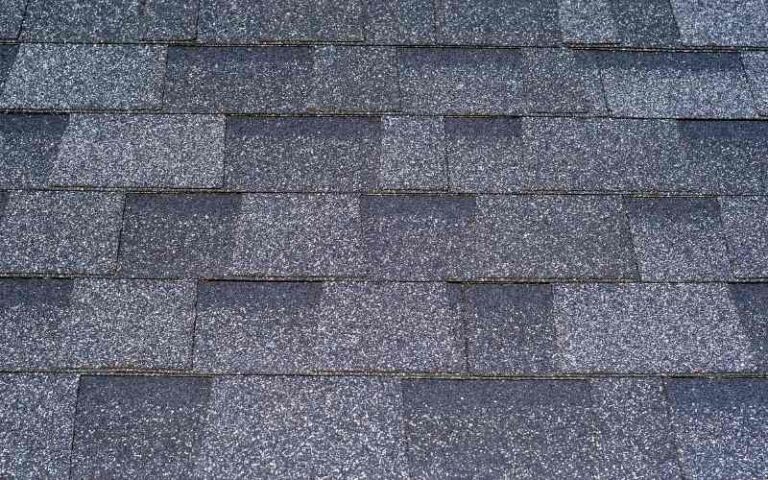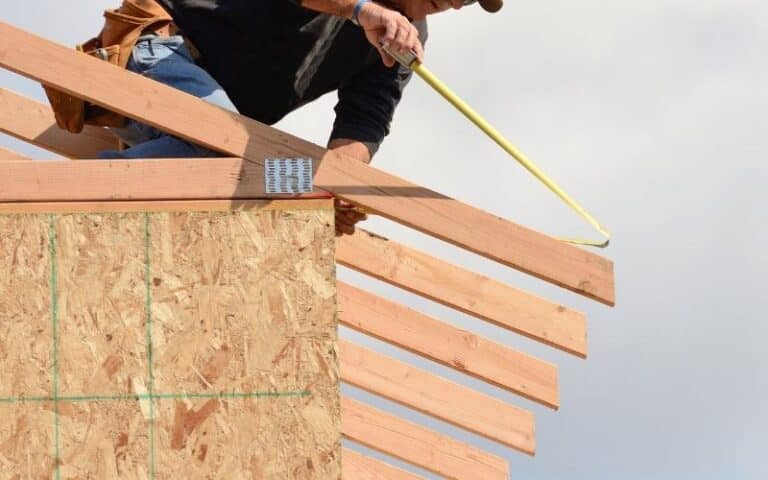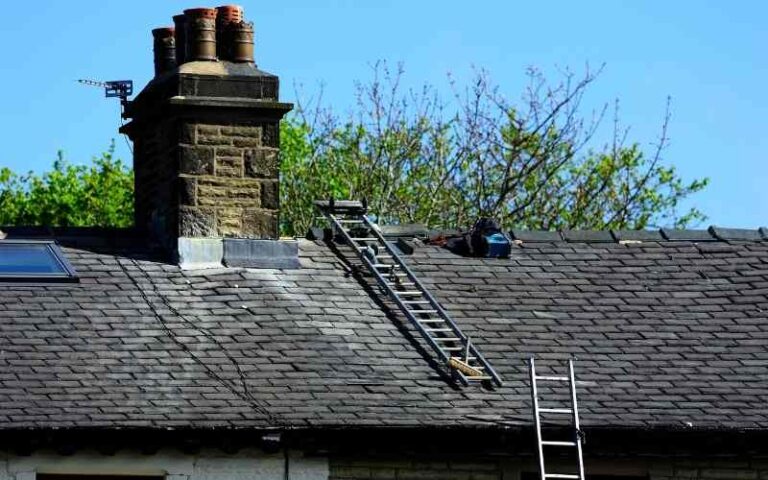Innovation, they say, makes the world go round. Such is the case with Tyvek house wrap, also popularly known as Dupont Tyvek Homewrap.
It is a different house wrap that skillfully utilizes the unique material science and engineering principles to produce a weather-resistant barrier that keeps air and water out while allowing moisture vapor to escape.
Hence, it is highly effective at improving the durability of buildings.
No, Tyvek House Wrap is not recommended for use on roofs. According to its manufacturer, Dupont Tyvek Home wrap is made and meant for use on the walls of buildings. They maintain the durability of building structures by regulating the flow of moisture and water droplets from the exterior walls of the building to the interior and vice versa.
Ready for a Roofing Quiz?
Is Tyvek Good for Roofs?
The roof is a highly essential aspect of any building. Hence, carefully pay attention to the quality and property of materials used in roofing. In addition, the material to be used must be durable, reliable, and proven.
Paying proper attention to these aspects of roofing materials and wise selection will save you a lot of stress and money in the long run.
It remains an incontestable fact that Tyvek House wraps have been performing excellently compared with its competitors.
Since shelter is one of the basic needs of humans, the Dupont Tyvek Home wrap replicates the same performance on walls on the roofs.
However, the Dupont Tyvek Home wrap is not suitable for roofs. Just as we have mentioned in the introductory section of this article.
Dupont Tyvek Home wrap came from a unique material science intervention targeted at elongating the lifespan of building structures.
The unique material science intervention is due to recurrent incidences of building collapse, many of which building engineers found to be a result of a time-compounded weakening of the building walls secondary to prolonged and persistent exposure to moisture and water droplets from rain.
However, all hope is not lost! To combat roofing problems, the Tyvek brand has a specially tailored roofing solution named Dupont Tyvek Protec.
This product is a synthetic roofing underlayment that has distinguished itself in the market.
According to research, the Dupont Tyvek Protec retains its protective ability several years after its installation.
In sharp contrast with its competitors, whose defensive ability and integrity have waned drastically over the same time the study was conducted.
Dupont Tyvek Protec
This highly effective and reliable synthetic roofing underlayment comes in three primary forms – Protec 120, Protec 160, and Protec 200. Your roofing professional would specify the particular one for your roofing project.
Hence, do not just proceed to buy any Dupont Tyvek Protec you see in the market. Instead, consult your roofing professional first and inform them about your preference for Dupont Tyvek Protec.
What do You need To Know About Dupont Tyvek Protec?
Now, this section is essential for your education. It aims at teaching you the basics of roofing underlayments.
The knowledge you gain here would help you engage in more productive conversations with your roofing technician and make the process more lively and meaningful to you.
All underlayments are water-resistant. The distinguishing factor lies in the component of the underlayment.
The asphalt felt paper, otherwise known as the Asphalt / Felt/ Tar paper, is one of the oldest underlayment forms available.
They are made from wood pulp and various organic materials ground together and coated with an Asphalt layer.
The asphalt serves to repel water from the surface of the underlayment.
However, the asphalt felt paper had been replaced mainly by synthetic roofing underlayment products, one of which is the Dupont Tyvek Protec. Read more to know if you can Use Staples on Tyvek?
The synthetic roofing underlayments are polypropylene and have the following advantages over the asphalt felt paper.
- They are more durable
- They do not tear easily
- They have a non-slip surface
Other roofing underpayments include Ice and water shield and High Ice and Water shield.
Now, back to our main point of discussion! Yes, Tyvek has excellent roofing as well as home wrap products.
However, for best performance, it is advised that all Tyvek users should stick to the manufacturer’s indication of use for each of the products manufactured.
For example, the Dupont Tyvek Home wrap would never do an excellent job on the roof, whereas the Dupont Tyvek Protec would not do an excellent job if used as a home wrap.
Hence, we can state that Tyvek, specifically Dupont Tyvek Protec, is suitable for roofing. Any other product from Tyvek would not serve well in the roofing aspect of a house.
In this light, we have seen that the most suitable Tyvek product should be for use in the recommended area of the house as per the manufacturer’s recommendation.
This way, one would be well assured that the Tyvek engaged would again deliver the excellent protection it is well known to give to any house on which it is used either as roofing or home wrap.
Can You Use Tyvek Instead of Roofing Felt?
Underlayments are highly essential in the roofing process. They serve as protection from the elements in case the integrity of the shingles is compromised.
Hence, it is no surprise that they have proven reliability and durability materials.
Of course, either Tyvek or roofing felt underlayment could be for your roofing. However, the Tyvek has several advantages over the roofing felt.
Therefore, we advise you to use the Tyvek if your budget can take care of it. The typical pros of the Tyvek over roofing felt include:
- It does not tear as easily as roofing felt; hence it is much more durable and reliable than roofing felt.
- Less likelihood of leaks
- High reliability
The choice between Dupont Tyvek Protec and Roofing lies totally with you, the homeowner. Depending on your financial capability and preference for either of the two, you must choose.
The Dupont Tyvek Protec is usually much more expensive than the roofing felt. However, the benefit and peace of mind associated with Dupont Tyvek Protec far outweigh the cost advantage of the roofing felt.
This opinion favoring the Dupont Tyvek Protec stems from reports from several homeowners who have used both products for their roofing.
Reports from long-term evaluation and close monitoring for 20 years by some researchers have shown the Dupont Tyvek Protec’s features.
These include superior performance, durability, integrity, and reliability to the roofing felt and other types of roof underlayment.
In the long term, Tyvek gives more value for money than roofing felt. Furthermore, Tyvek is much more weather resistant than roofing felt.
Hence, the Tyvek offers virtually all-around protection for your house in sunshine and rain!
Conclusion
In conclusion, Dupont Tyvek Housewrap should not be used on roofs. They specifically protect walls.
Hence, they are not adequately equipped with components to protect the roof. However, the Dupont Tyvek Protec is an excellent product for roofing.
It has outperformed its peers in the roofing industry. Hence, Dupont Tyvek Protec is a recommended roofing material.






